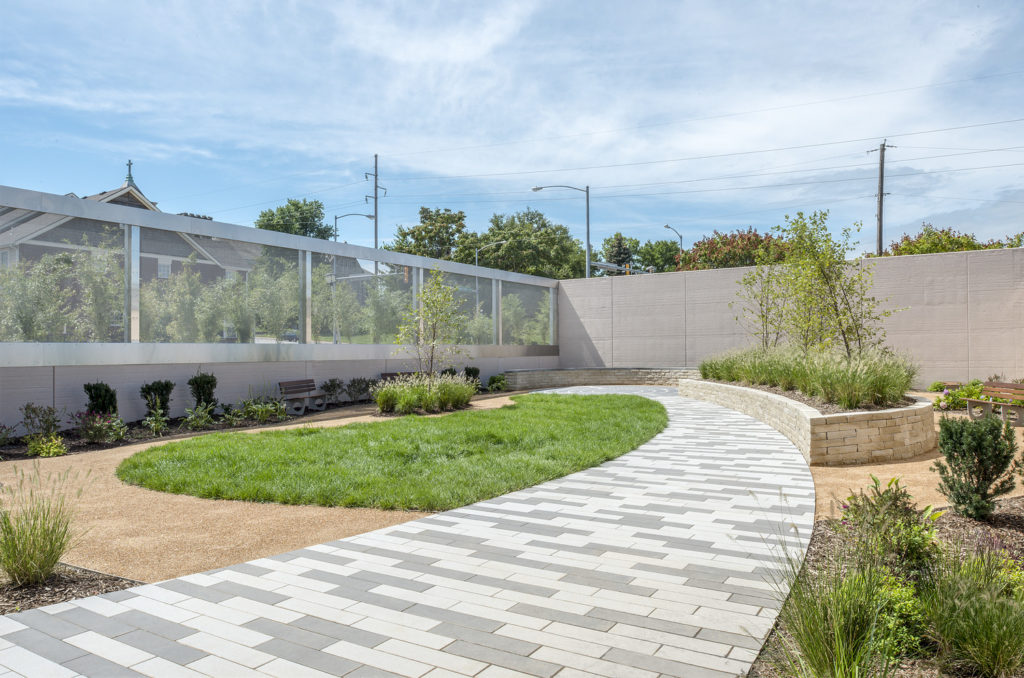For all its ills, the pandemic has done one positive thing for behavioral health: It has helped to destigmatize the practice.
Attention to mental health in the United States, arguably, has never been greater, with so many having to deal with isolation, stress and daily anxiety about work and family.
Architects in the mental and behavioral health design industry are well aware and are accommodating the needs of residents, health care providers and communities through improved and more open design.
Shary Adams, AIA, ACHA, EDAC, LEED AP, mental health practice leader, in the CannonDesign, Washington, D.C. office, says that there must be a focus on outdoor spaces now.
“If there’s not, that’s inhumane,” she said. “There’s been so much emphasis all around on keeping everyone safe, that many are feeling like they were ‘locked-up,’ and they didn’t like that. Get people outside. Architects must take a totally holistic approach: we need to design better lines of sight, better acoustics, more natural light and provide accessible outdoor rooms for both patients and staff.”
 CannonDesign
CannonDesignAdams agrees that COVID-19 has helped to destigmatize behavioral health. “It’s much more in the news now and people are understanding it better and not shaming those who need care,” she said.
CannonDesign is an architectural firm that has received over 600 design awards from general and trade media publications — as well as a bevy of awards for their designs of behavioral health facilities — aims to help.
The firm has designed more than 6.5 million square feet of behavioral health facilities and has approximately a dozen others in the works — all created especially with safety and efficiency in mind.
No More Tight Corridors
Interiors remain a key component to designing more effective facilities.
“We have to rethink the interior environment because corridors are not functioning anymore,” Adams said. “You don’t want to have to pass someone in the hallways who is agitated. One job of the architect is to make the providers safer and their job easier; if we’ve done that, we’ve succeeded.”
She said that “we need to rethink the 8-foot-wide halls we’re used to seeing. Instead, create angled and or no corridors, break up the pathway as often as possible. There should be no ‘dead-end’ zones. Let the patients have the option to be able to decide when to come and go, empower the patient to choose, let them avoid confrontations and at the same time increase staff’s ability to see.”
Adams said developers need to realize that residents are in various stages of treatment, and therefore, states of mind, with some having just been admitted while others are fully immersed in their treatment cycles.
The adaptation and acceptance of social distancing has steered designers toward plans that create more open spaces, which are beneficial, she said.
“Provide more personal space; and today, with social distancing, people are more understanding and accepting of that,” Adams said. “These design techniques will reduce [individuals’] tension, reduce aggression and create safer, more therapeutic healing environments.”
Alison Leonard, AIA, EDAC, health practice leader, said living spaces should be more open and centralized “like you’d see in your home.”
Leonard said, “Design more for the human experience and consider flexibility to accommodate the needs of different patient types.”
The company worked on Strawberry Hill, a project for the University of Kansas, where the patient units can flex in size based on patient population needs and activity spaces can be used for different types of functions.
“Providing patients with choice while planning for future facility needs is essential,” she added.
Leonard and Adams said it’s important for operators to make an effort to bring the community into the facility.
“This, too, helps to destigmatize mental health,” Leonard said. “Create spaces for education and recreation for community neighbors, especially after hours.”
By transitioning to these types of environments, Adams said the industry will be successful with using a “crisis-and-recovery approach to care, not a catch-and-release.”
Written by Paul Bergeron



